Overview
Organization setup is your first step in using Zeroe. It is important to us to understand your organization's boundaries. As the GHG Protocol regulates, setting the right operational and organizational boundaries is a process that must be addressed due to these reasons:
To determine which sources of emissions to include
To classify sources to avoid double-counting
To provide more useful information to stakeholders
To help manage GHG risks and opportunities along the value chain
Zeroe requires you to go through a set of questions related to the organization's details, maturity level, and potential emission sources. The wizard will mainly shown below.
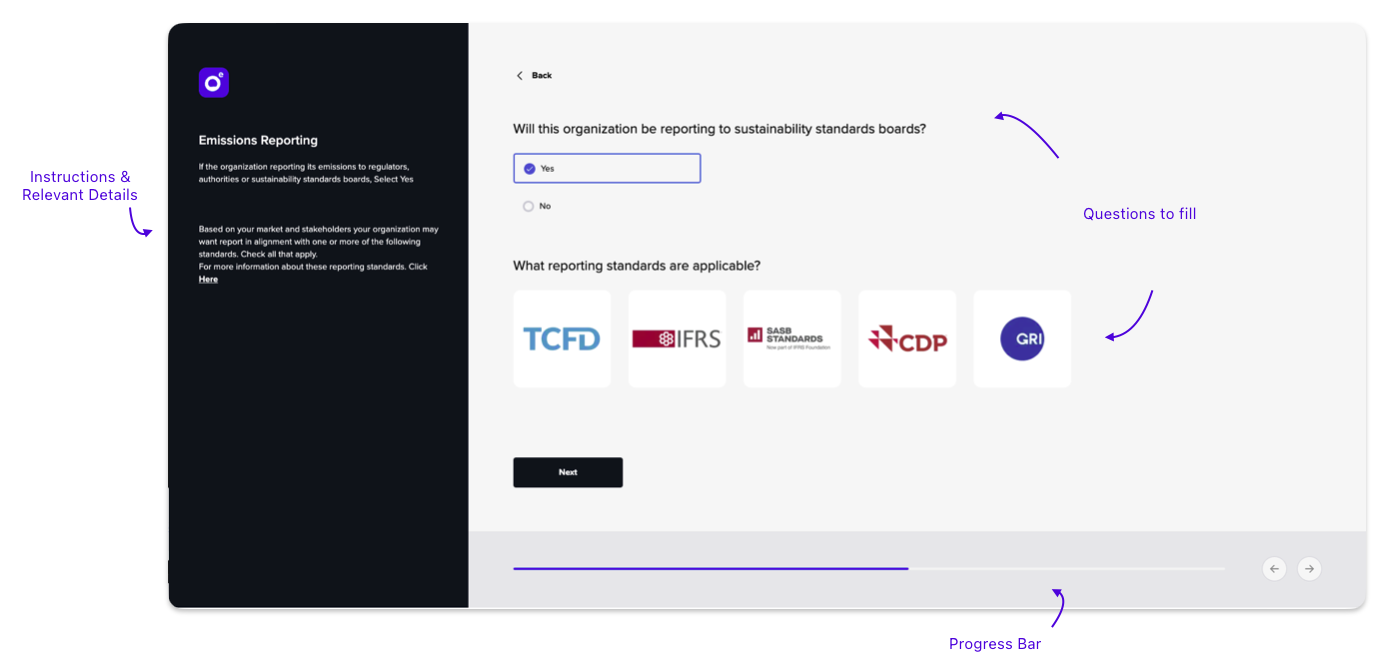
The Steps
Fill your legal organization's name.
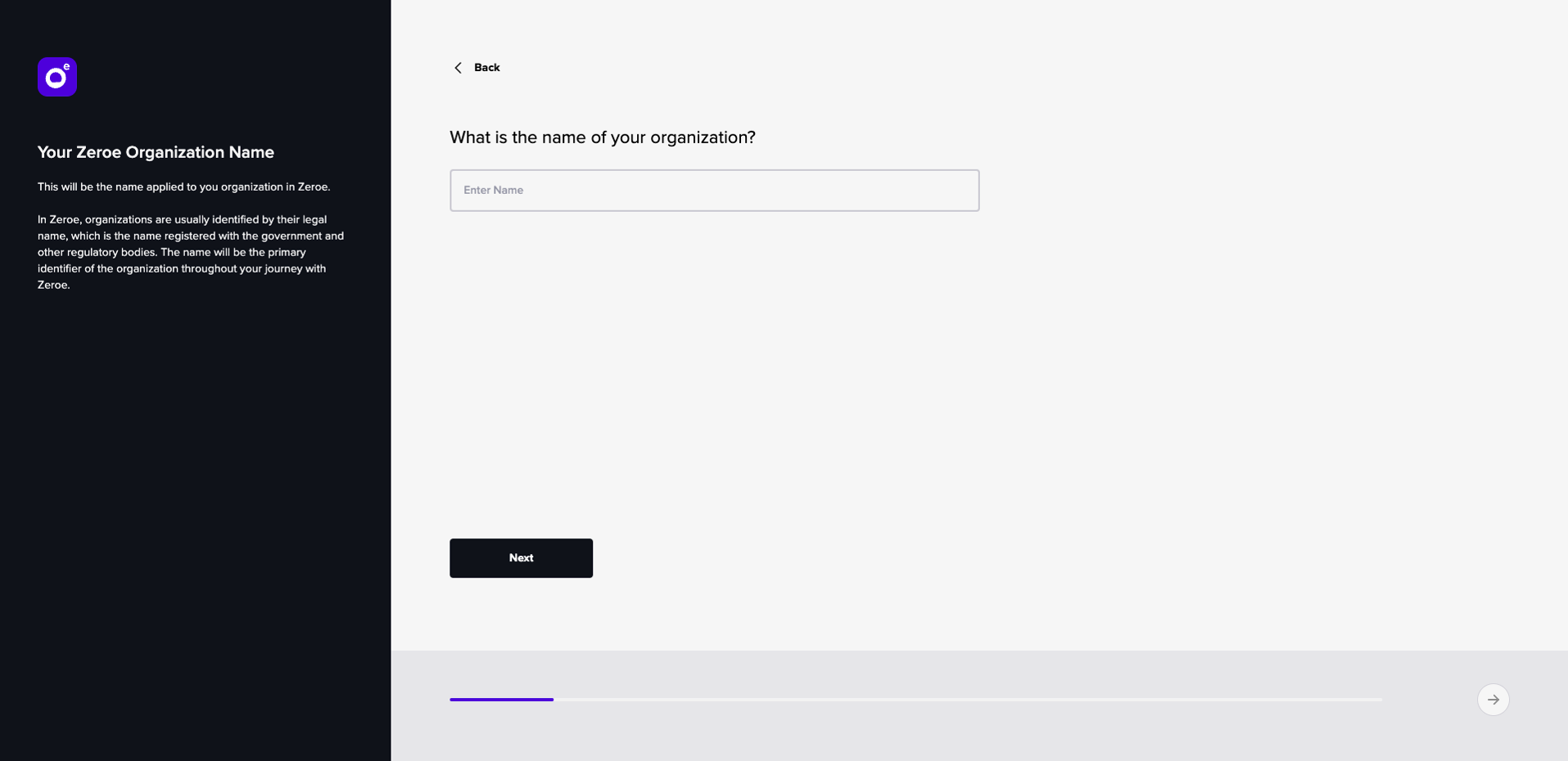
Choose your organization type. There are two types available, which are
Holding Company is a main company that aims to own shares and control their entities. It usually does not produce goods or services itself.
Operating Company is an entity that conducts operations, engages in commercial activity, and provides goods or services.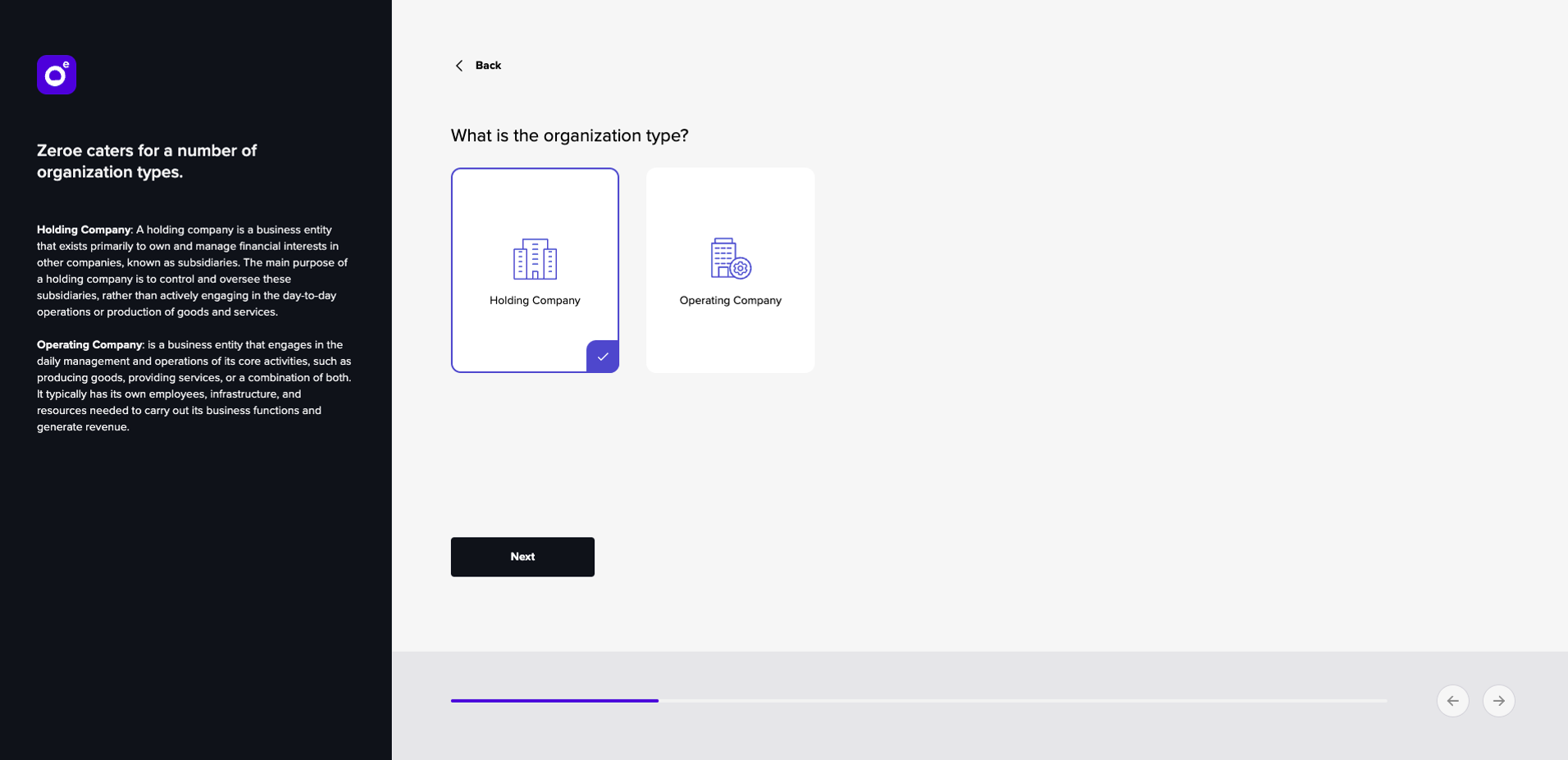
a. Choose your organizational boundary approach. Based on the GHG Protocol, there are two kinds of approaches, which are
Control Approach can be separated into financial and operational control approaches. Operational control means the main organizations should consider the emissions from an entity that they have its operational control. Financial control means the main organizations should measure an entity's emissions with the largest financial stake.
Equity Share Approach, which measures the emissions according to the company's share of equity in the operation.
You can learn more about determine organizational boundary here
b. Specific to Scope 2 emissions measurement, there are two types, location-based and market-based as well as the combination for correct calculation. In brief, the location-based method measures Scope 2 emissions by considering the average emissions intensity of the grid where energy consumption occurs. The market-based method also considers the specific electricity products or contracts a company has chosen for its energy consumption.
You can learn more about location-based and market-based here.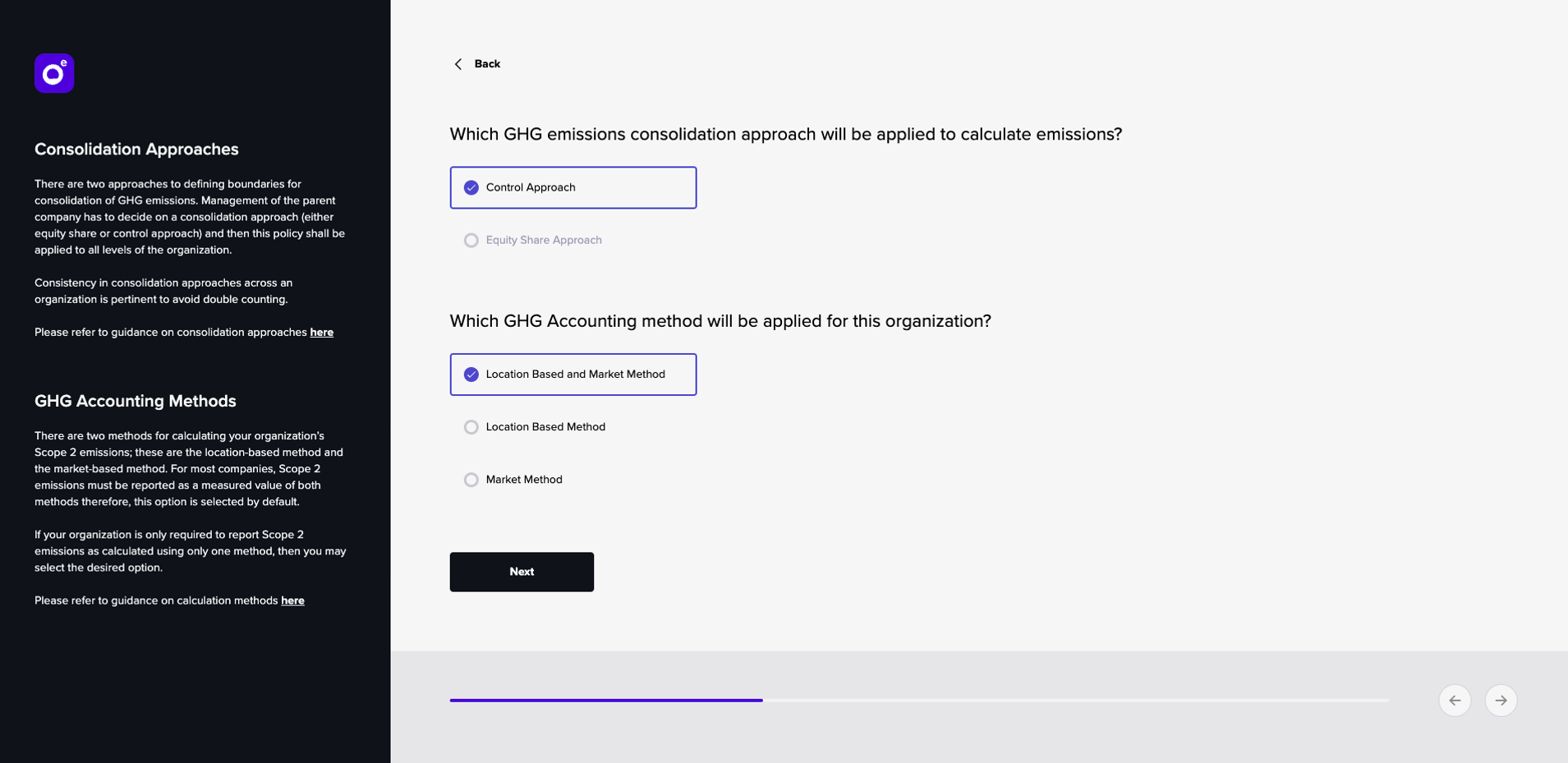
a. Fill in the information regarding your financial or reporting end period and revenue in the respective period.
b. Select base emissions calculation year. The base year is important to understand the change in your organization's emissions and how well you achieve your emissions reduction target. If your organization has yet to measure emissions before or set an emission reduction target, the year you use Zeroe can be set as the base year.
c. Prior years' emissions data should be provided in our platform if your organization has already measured the emissions before.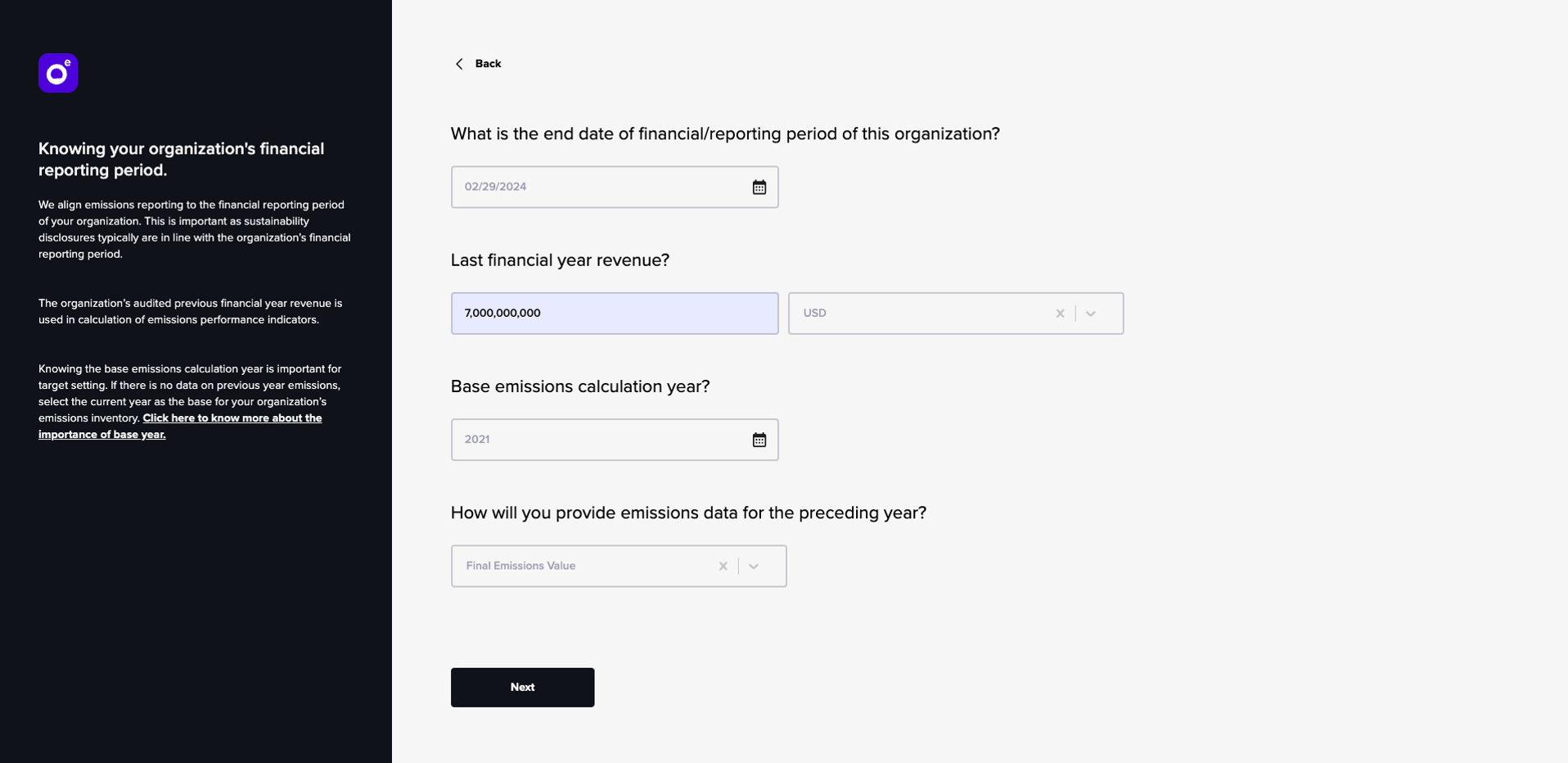
a. Select a country/jurisdiction where your organization mainly operates
b. Select your organization type; there will be two choices between Public and Private companies.
Public Company: A public company is a corporation whose ownership is dispersed among the general public in many shares of stock that are freely traded on a stock exchange or in over-the-counter markets.
Private Company: A private company is owned either by non-governmental organizations or by a relatively small number of shareholders or company members that does not offer or trade its company stock (shares) to the general public on the stock market exchanges but rather the company's stock is offered, owned and traded or exchanged privately.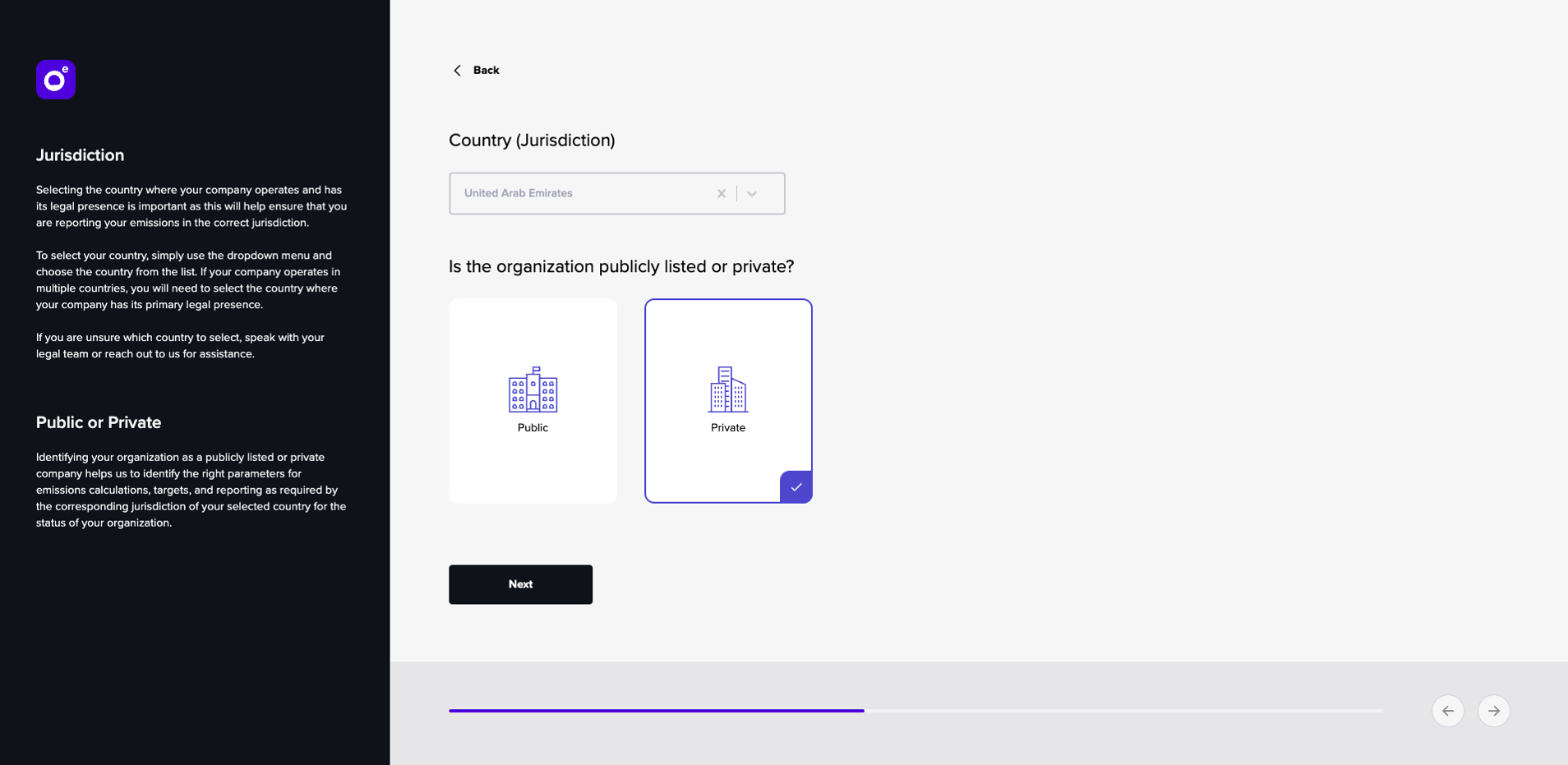
a. A yes/no question regarding whether your organization reports your emissions to regulators or relevant authorities.
b. Select reporting standard(s) that apply to your requirements/needs. The most notable frameworks/standards are TCFD, GRI, CDP, and ISSB. More explanation about these frameworks and standards can be found here
Adding persons responsible and accountable to operate Zeroe and conduct critical tasks based on the role.
Person Responsible: the selected person(s) within your organization to collect, capture and input the data as well as conduct the reporting process.
Person Accountable; the selected person within your organization to check the input data and calculation as well as review and complete the reporting process.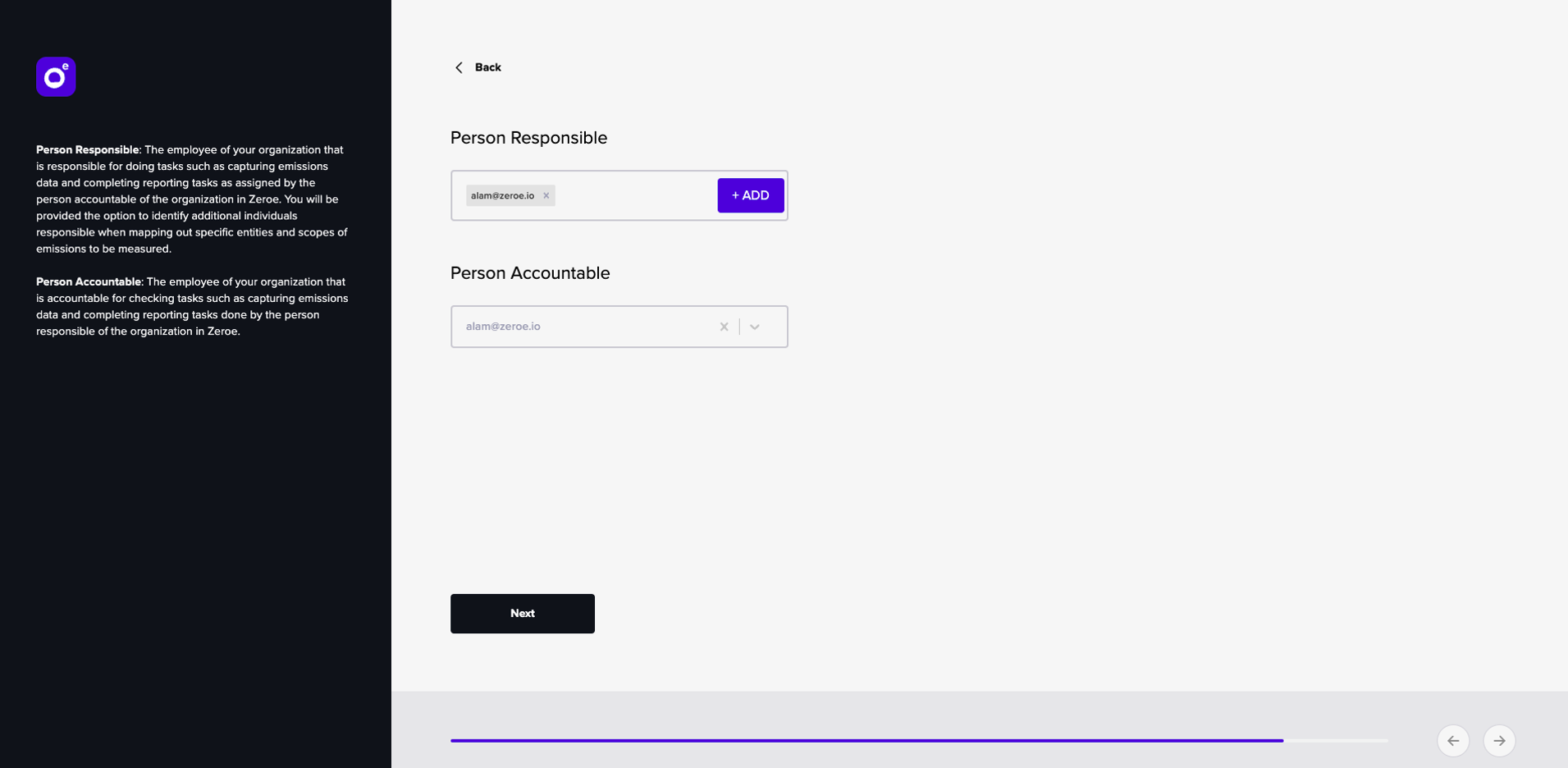
a. Select a unit for calculating the intensity of your organization's total emission. It is important to give a perspective on how well your organization performs emission reduction based on the selected unit. It is usually used for benchmarking with other companies in a similar sector.
b. Select the emissions Scope that you want to report.
Scope 1 emissions are greenhouse gas (GHG) emissions that are directly produced by a company or organization's activities, facilities, or equipment. These emissions are sometimes referred to as "direct emissions" because they are physically produced by the company's own operations.
Scope 2 emissions are greenhouse gas (GHG) emissions that are indirectly produced by a company or organization's activities through the generation of purchased electricity, heating, or cooling. These emissions are sometimes referred to as "indirect emissions" because a third party produces them as a result of the company's consumption of electricity or other forms of energy.
Scope 3 emissions are greenhouse gas (GHG) emissions that are produced indirectly by a company or organization's value chain, including upstream and downstream activities such as the extraction and production of raw materials, transportation and distribution of products, and the use and disposal of products by customers. These emissions are often referred to as "indirect emissions" because they are produced by activities that are outside of the company's direct control.
More explanation about the general guidance of Scope 1,2 and 3 can be found here.
c. Select the reporting frequency for each emission that your organization will report. It is based on the data availability and natural circumstances of the reporting period of each respective data.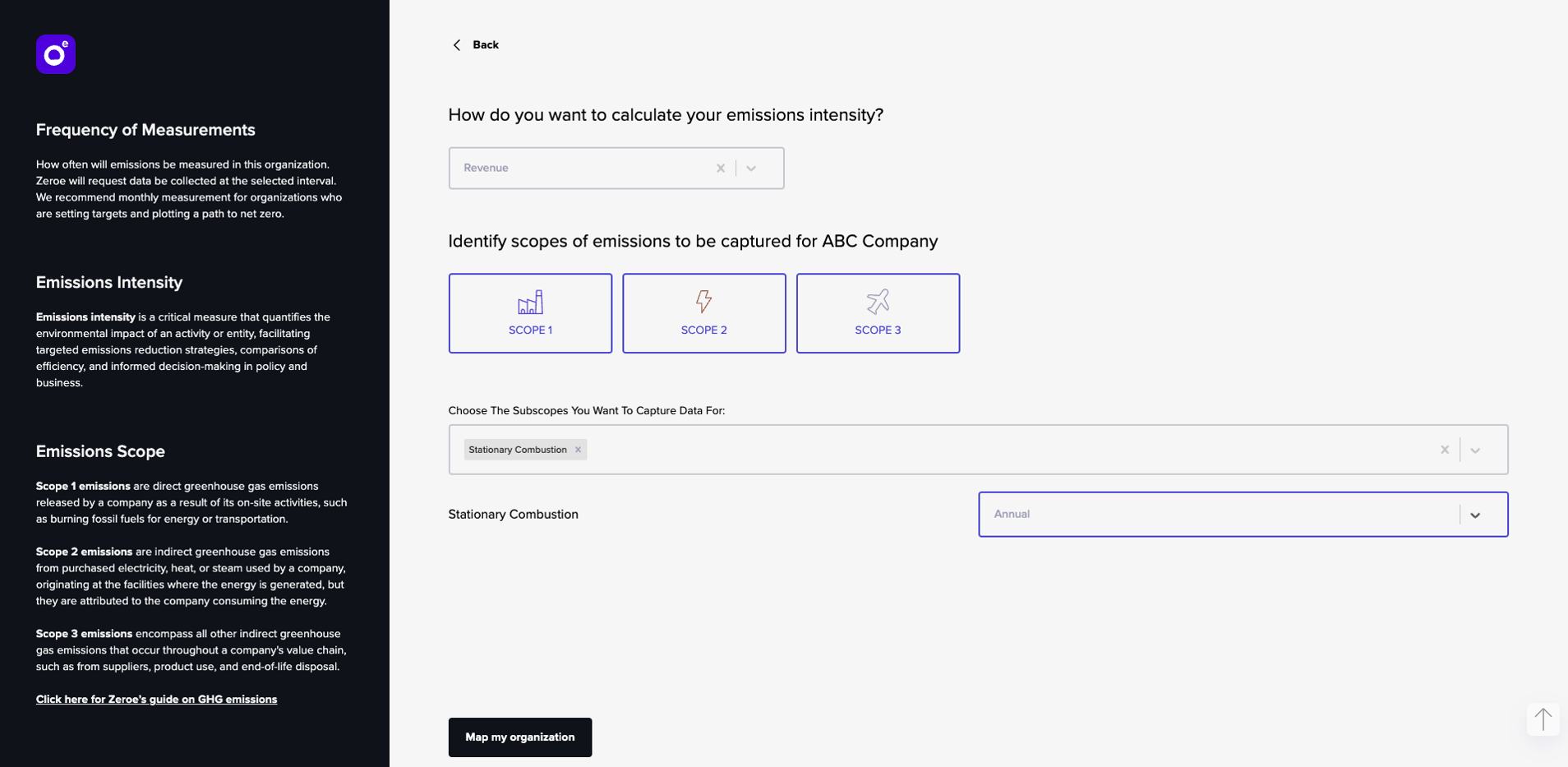
Finishing these steps will complete your organization setup, and Zeroe is ready to use by your organization. The next step is Map Organization, which can be checked here.